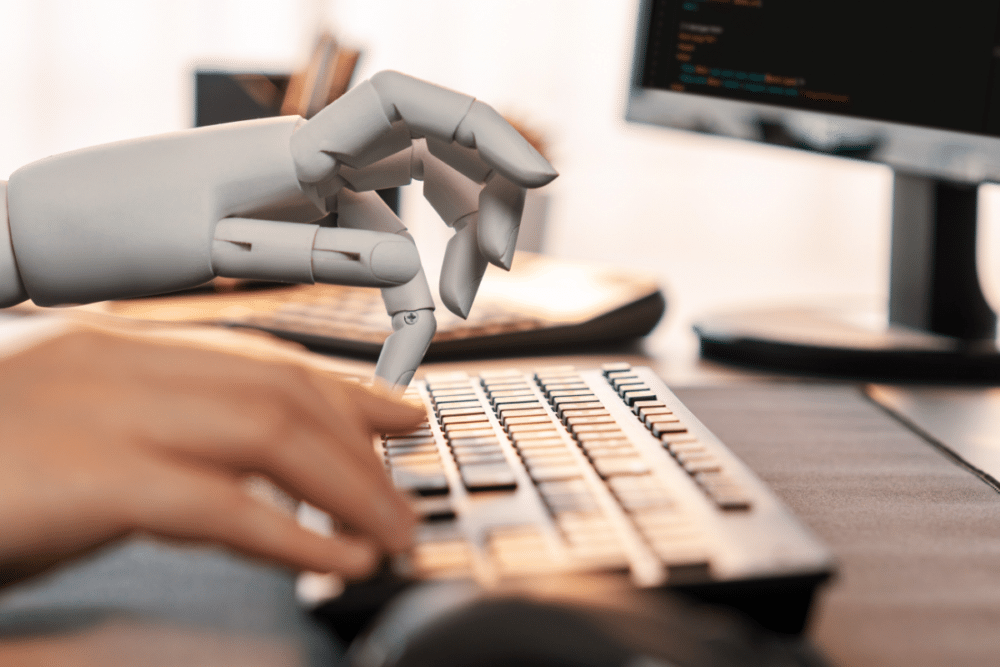Discover how AI-powered collaborative work management tools can help your manufacturing teams maximize specialist skills while minimizing mundane work.
Content provided by Wrike
There’s no doubt that AI and automation are here to stay, especially in the fast-moving world of manufacturing. The technology is now used in every part of the product lifecycle process, from design and development to production and quality control.
But where does this leave us humans? How can we ensure our skills, knowledge, and experience get the chance to shine when robots are doing the heavy lifting?
The answer is collaboration: combining technology with talent to produce game-changing results. Let’s look at three types of collaboration software that can help manufacturing teams make the most of this unique opportunity for growth, enriching our lives, and enhancing our work.
Collaborative Work Management Platforms
Wrike is the most intelligent work management platform on the market, used by industry-leading manufacturing teams such as Electrolux, L’Oréal, and Siemens to enhance every workflow and connect every team. In fact, Gartner® recently named Wrike a Leader in 2024 Magic Quadrant™ for Collaborative Work Management for the second year in a row, recognizing the platform for its ability to “cater to a variety of use cases and address emerging business challenges.”
As collaborative work management software, Wrike is the perfect complement to product lifecycle management tools, uniting people, processes, and product data — all in one place. It supports manufacturing teams of all sizes and specializations, helping them to:
- Create custom workflows that accelerate product development
- Manage resources, scanning for issues automatically
- Enhance visibility with detailed dashboards
- Optimize everyday tasks with tried-and-tested templates
- Minimize human effort and reduce manual error with automated tasks
- Issue automatic reports based on live data from multiple sources
- Integrate with hundreds of third-party apps to smooth collaboration
Even better, it comes with powerful AI and automation tools that can relieve our teams’ workloads, freeing them from repetitive tasks so that they can prioritize high-impact work that results in real revenue. It’s the ideal way to marry the best of our human resources with the smartest machine-learning solutions.
Online Communication Tools
Zoom has soared to the top of the software tables in recent years, and for good reason — like other solutions by Google, Microsoft, and Slack, it’s a fantastic way for remote teams to communicate and collaborate in real time.
These days, most of the most popular communication tools have introduced AI and automation to help accelerate and smooth their users’ interactions, including features like:
- Transcribe conversations
- Supply closed captions
- Summarize meetings
- Translate content in real time
- Analyze engagement, attendance, and more
This all helps to ensure that we can focus on high-value work like strategizing, planning, and problem-shooting in meetings rather than laboriously taking notes or translating. In fact, a recent report by Zoom found that when leaders use AI, 85% complete tasks faster, 84% are more productive, and 81% deliver higher-quality work. Online communication tools like Zoom can be made even more effective through integration with collaborative work management solutions like Wrike.
Visual Collaboration Software
Remember whiteboards, flip charts, and posters? These still exist, except now they’re mostly digital, appearing as powerful features in modern visual collaboration platforms like Klaxoon.
These software solutions are often favored by manufacturing teams that need to ideate, plan, and design via a shared cloud-based canvas. Their shared boards and instant commentary make them ideal for brainstorming, strategizing, mind mapping, and more — particularly for remote or multinational teams.
AI and automation have enhanced this type of software, too, offering new time-saving benefits by allowing teams to:
- Simplify and summarize board content
- Generate automatic action plans
- Group ideas by topic
- Translate texts and ideas
This means less time spent on administration and more focus on ideation, resulting in better and more innovative products that can help to set you apart from the competition.
With 31% of workers reporting that their workload has grown in the last year, there’s never been a better time to lean on machines to ease the burden. But if you’re thinking of investing in AI or automation, make sure you prioritize your people, too. Collaborative work management platforms, communication tools, and visual collaboration software can help unite teams and technology to maximize the output of both.
In a move that’ll be welcomed by many in the manufacturing industry, Wrike recently entered into an agreement to acquire Klaxoon. This means that teams will soon be able to access the most cutting-edge collaborative tools in one powerful place.
As Thomas Scott, CEO of Wrike, put it:
“This isn’t just about adding another tool to our platform — it’s about revolutionizing how work gets done, bringing creativity, engagement, and execution into one seamless experience.”
Discover how Wrike is pioneering the partnership between AI and people, transforming the product lifecycle of companies like Fitbit, Schneider Electric, and more — try Wrike for your manufacturing team now.







![Image [Best of 2025] Power Moves in the Energy World](/wp-content/uploads/sites/3/energy-320x213.jpg)
![Image [Best of 2025] How Generative AI Is Transforming Industry](/wp-content/uploads/sites/3/AI-4-320x213.jpg)
![Image [BUYING GUIDE] How to Choose the Right Industrial Robot?](/wp-content/uploads/sites/3/Industrial-Robot-320x213.jpg)

![Image [Buying Guide] How to Choose the Right Safety Shoes?](/wp-content/uploads/sites/3/Safety-Shoes-320x213.jpg)